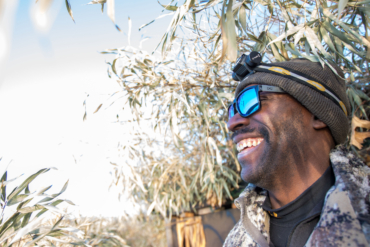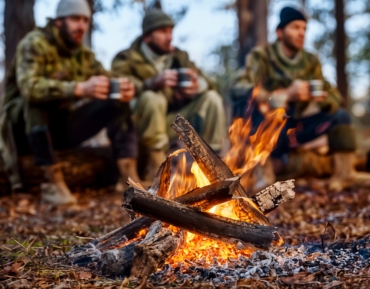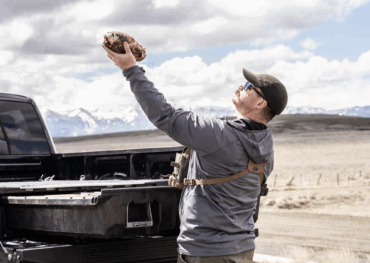Lake trout fishing is one of the most rewarding styles of fishing there is. While anyone can drop the bait into the water, it does take a unique skill set to truly have success targeting lake trout.
Mackinaw, lake char, gray trout, togue, paperbelly, mud hens — lake trout go by these names and many more. But wherever they are, they’re prized as both game and table fare.
These large trout are the biggest of the char family. The record rod-and-reel lake trout weighed in at a whopping 72 pounds and measured 59 inches, and the fish commonly get as big as 15-40 pounds.
From learning their range and habitat to dialing in the perfect lake trout bait, we’re here to help make your lake trout fishing experience as fun and productive as possible.
Lake Trout Range

Generally speaking, native lake trout can most easily be found in the northernmost reaches of North America. Many lakes in Canada and Alaska hold native lake trout, as do the Great Lakes and some smaller bodies of water in the Northeast.
That said, these fish have also been introduced as nonnative species across North America. In the past few decades, Yellowstone National Park has become a lake trout fishing hot spot — especially in Yellowstone Lake, where they have since become a problem species.
If you do fish in Yellowstone and manage to hook an invasive lake trout, know that it’s illegal to catch and release them, as they’re a threat to the native keystone species, the Yellowstone cutthroat trout. So catch ’em, keep ’em, eat ’em, and enjoy ’em.
Lake Trout Habitat
Within any given body of water, lake trout tend to prefer similar habitats and underwater landscapes. While trout will often be moving around and looking for food, they will rarely stray far from a place that offers them protection.
Aquatic vegetation is always a good place to start when targeting lake trout. Stumps and downed logs also provide favorable coverage.
Lake trout also prefer colder temperatures — usually, water around 55 degrees Fahrenheit — meaning dropoffs and deeper water make for excellent habitat.
Seasonality
One of the most appealing things about lake trout fishing is that it can be done year-round. Anglers will need to adjust their methodology with the changing seasons, but it’s not that hard with a little practice.
At lower elevations, lake trout are particularly active in the spring and fall. During these months, the water is cold, and the fish are on the move. Following ice melt, lake trout will generally move closer to the surface, as the freshly open water will be cold enough.
In the middle of summer, when lakes are warmest, lake trout will rarely be found anywhere but the deeps — making this the most challenging time of year to fish for them.
Lake Trout Bait & Tackle
There are various time-tested tools to target lake trout effectively. For most spots, a lightweight spinning rod with a 6-pound monofilament line will suffice for most lake trout needs.
For anglers that prefer live bait — which has proven effective when targeting lake trout — minnows tend to be the go-to option. In their natural habitat, lake trout will feed on small to medium-size baitfish, so it should come as no surprise that the minnow on the end of your line may also seem like a worthy meal. Like other fish, however, nightcrawlers and worms can also be fine live bait choices.
If you’re more into fishing with lures, there are a variety of options available. Spinners, jigs with big tails, and jerk baits can all produce monster lake trout. Flies, spoons, and inline spinnerbaits are also decent options. Finally, PowerBait or Power Eggs can work well, but only for introduced or stocked fish.

Lake Trout Fishing Technique
The techniques for lake trout fishing are as varied as the bait, but beginner anglers should consider starting with one of the options below.
If fishing with live bait, attach your worm or minnow to your bait hook with a weight attached to the line just above. This will help escort your bait below the surface.
Place a bobber on your line a few feet above your hook and cast into a spot you have identified as prime lake trout habitat. Once your bobber jerks or dives below the water, set your hook and reel in your fish. Use this method in the early and late seasons when lake trout are more likely to hang in shallower waters.
Toward the middle of summer, you will need to fish off the lakebed instead of the surface. To do so, you can set up your rig similar to what is described above but remove the bobber. This will allow the lead weight to sink to the bottom with your bait floating just above the lakebed — targeting deeper fish during the warmer months.
Finally, if you’re fishing with any of the lures mentioned above, target lake trout habitat and cast into it. Let your spinner, spoon, jig, or jerk bait sink for a little while and then begin retrieving it back to the boat. This method requires a bit more experience, as anglers will need to play with the speed and depth of retrieval to hone in on lake trout location.
Ice Fishing
Many anglers can’t help but fish year-round, and for those targeting lake trout, winter can be an incredibly enjoyable season. The trout are easier to access when in shallower water this time of year, and you can’t beat the peace and quiet of winter.
Ice fishing technique is similar to the middle method outlined above, and anglers should still set up on dropoffs with natural cover nearby (weeds, logs, stumps, etc.). Slowly jig your bait through your hole in the ice to attract curious trout and patiently wait to set the hook on that evening’s dinner.

Final Thoughts
If you’re looking to fill your freezer with fish and you’re local to their range, fishing for lake trout is a darn good place to start.
Although summer fishing is difficult, the cooler waters these fish inhabit make them a great three-season option. Good luck on the water and enjoy the feast!






